First Light Optolong HA SII OIII Narrowband Filters
Posted: 2 November 2019
At the "First Annual David H. Levy Arizona Dark Sky Star Party" my wife Laurraine won a door prize: a Optolong 2" HA SII OIII Narrowband Telescope Filter Kit.

Here is the lucky winner in Cassiopeia Observatory with her filters.
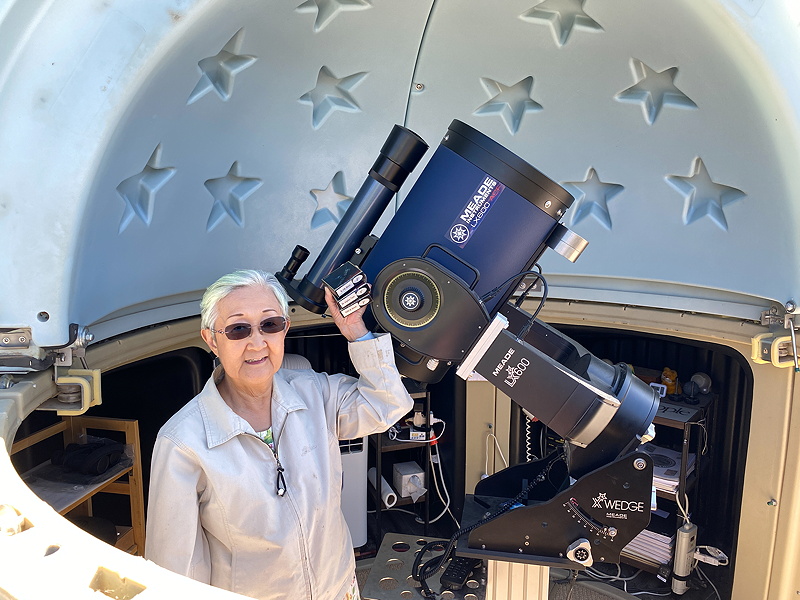
And here is the lucky user.
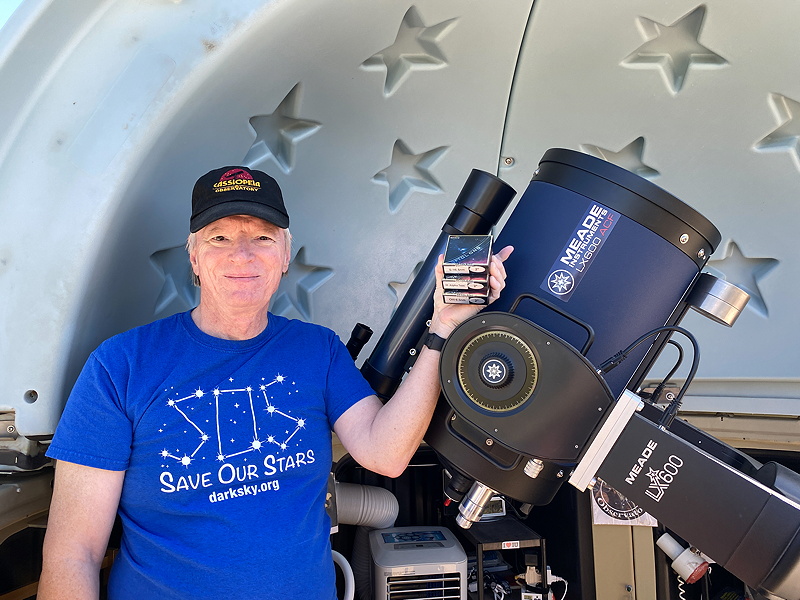
The frequency specs for the filters are:
H-Alpha 656.3nm, 7nm
SII 671.6nm, 6.5nm
OIII 500.7nm, 6.5nm
|
Open: Friday, 1 November 2019, 1806 MST Temperature: 76°F |
Session: 1402 Conditions: Mostly clear |
Equipment Used:
12" f/8 LX600 w/StarLock
2" 24mm UWA eyepiece
SHO Deep Sky Astronomical Filters
Camera:
D850 DSLR
1817 MST: LX600 ON, StarLock OFF, High Precision OFF.
Viewed the Moon, 102X. Then viewed Jupiter, its Great Red Spot, and four moons, 102X. That was followed by Saturn and three moons, 102X.
Seeing was not very good with clouds approaching.
Prior to powering on the telescope I stepped outside of the observatory and took this D850 DSLR photo showing three planets and the crescent Moon (f/3.5, 1/20sec, ISO 2500, focal length 35mm).

Mouseover or tap on image for labels
I mounted the D850 DSLR at prime focus of the 12" telescope and took this photo of the Moon (1/250sec, ISO 400).
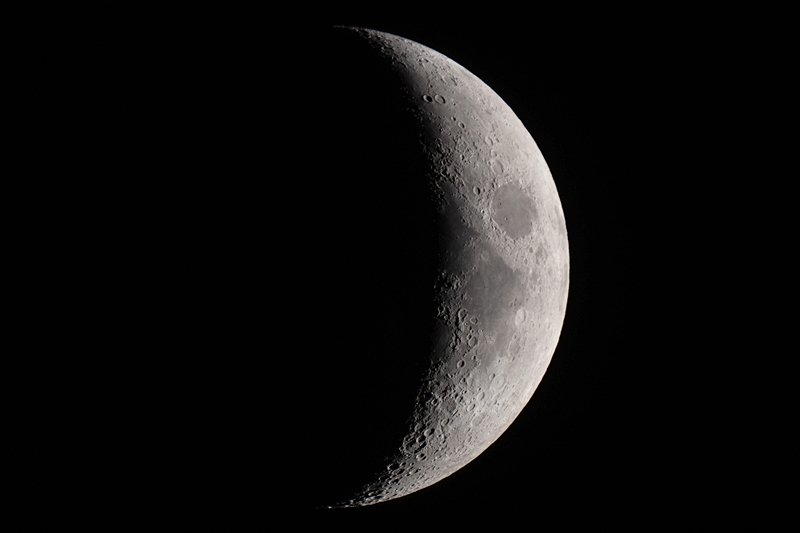
This is a 2 second exposure, ISO 400, showing Earthshine.
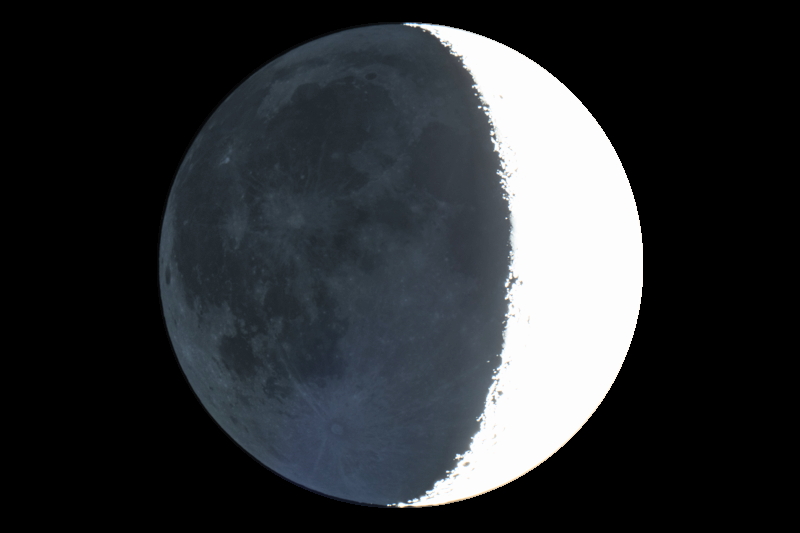
Although clouds were rapidly approaching I at least wanted to do some focus tests with the SII, H-Alpha, and OIII filters to see if I needed to worry about a focus change when swapping filters. I slewed to the star Vega and took this prime focus image (cropped) of Vega with a Bahtinov Mask without any filter (1 second, ISO 1600, White Balance 4550K).
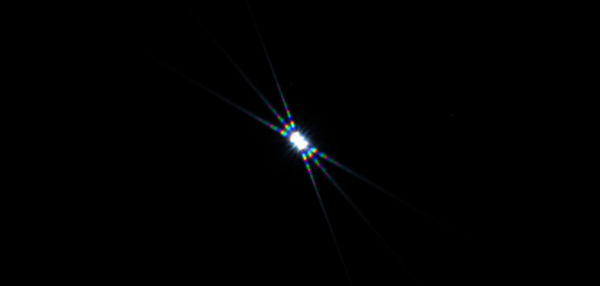
The diffraction spikes show a good focus.
I then mounted each of the filters and took the following images (cropped) of the diffraction pattern.
SII (30 seconds, ISO 6400, White Balance 4550K)
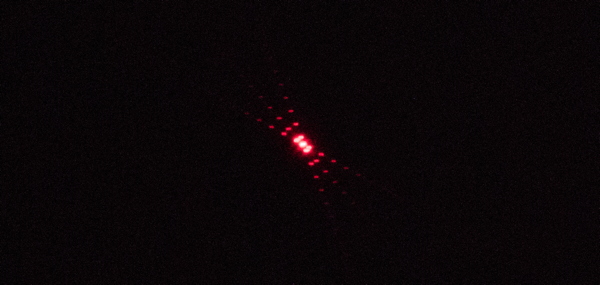
HA (30 seconds, ISO 6400, White Balance 4550K)
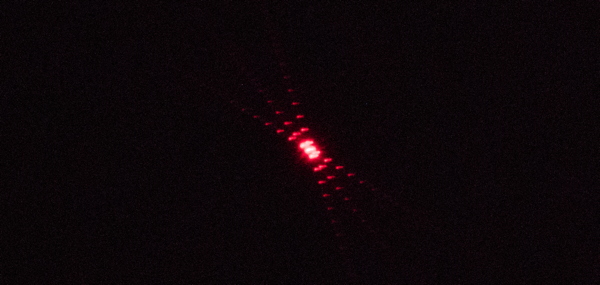
OIII (30 seconds, ISO 6400, White Balance 4550K)
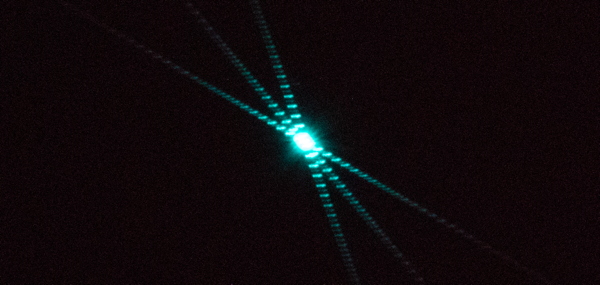
Longer exposures were required with the filters than without a filter. Some trailing is evident as no guiding was done during the exposures, but the focus is still generally good. Will have to see how the longer exposures will effect Deep Sky Object (DSO) imaging with the D850 DSLR.
I did notice one significant thing when using the filters. The prime focus adapter would fully insert into the visual back I was using when no filter was attached. However, with a filter attached the adapter would not fully insert, resulting in a focus change. This means that I would need to focus with a filter attached, which will require a brighter star than would otherwise be the case. I do have a 2" filter that I do not use that seems to be the same thickness as the Optolong filters. I plan to precisely measure the filters and if the same thickness and if I can remove the glass from the unused filter, I will be able to focus without the SHO filters. If my initial DSO imaging with the filters goes well I may get a filter wheel or slider to eliminate the need to remove the camera from the telescope to swap filters.
After I completed the focus tests the cloud coverage was increasing and would likely interrupt my planned DSO SHO imaging. I decided to defer that to another session. I also plan to do similar focus tests while using a focal reducer.
1909 MST: LX600 OFF.
|
Close: Friday, 1 November 2019, 1931 MST Temperature: 61°F |
Session Length: 1h 25m Conditions: Partly cloudy |
Comments are welcome using Email. Twitter users can use the button below to tweet this report to their followers. Thanks.
Cassiopeia Observatory Home Page
Copyright ©2019 Michael L. Weasner / mweasner@me.com
URL = http://www.weasner.com/co/Reports/2019/11/02/index.html
